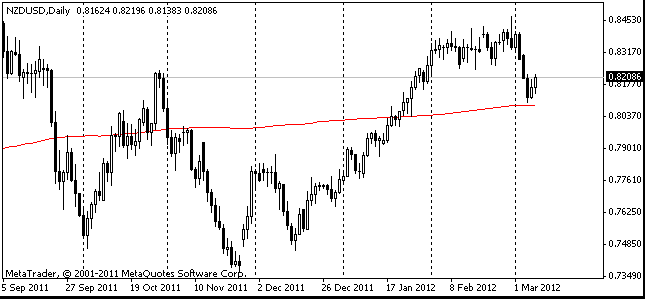EUR/usd
The Fed didn't manage to produce any impact on the market situation and fomc assumed a neutral policy stance. Even changes in the forecasts balanced each other. The growth expectations for this year improved (from 2.6% to 2.7%), while the long-term forecasts, on the contrary, were revised down (for 2013 from 3.0% to 2.9%% and for 2014 from 3.7% to 3.4%). Yet, the number of players believing that 2014 will be the year of an extremely tough monetary policy has increased. In the first minutes after the news release the dollar got momentum for growth, but didn't manage to consolidate the gains.
At the press-conference Bernanke claimed his readiness for further stimulation of the economy if needed. Such news calmed down the markets and allowed players to focus on corporate reporting. For now 200 out of the S&P 500 companies have given their reports and 150 of them have managed to exceed the expectations. This favourable signal helped the markets to stay positive. The increased demand for risk brought the euro/dollar above the 1.32 level. At the opening of Asian trading today the pair declined slightly, but soon the purchases resumed again. Now the euro/dollar is trading near the three-week highs at 1.3230. It's quite possible that the pair will grow further and test the 1.33 level soon.
Backstage rumours are now focused on the need to bail out Hungary. Most likely, this country won't be the only one in need for money this year. So, it's going to be a hard year for the EU as it will have to help both the Euro-zone periphery and weak countries in the east and centre of Europe. In addition, retail investors have restrained their ardour to buy these countries' government bonds after the case with Greece.

GBP/USD
The preliminary GDP estimate for Britain shows that the country has moved into recession. After a 0.3% decline in the last quarter of the previous year the economy shrank by another 0.2% in the first quarter of the current one. The major issue is the construction sector: it decreased by 3% over the first three months. It looks really surprising as the PMI figure on the contrary pointed at the growth of activity in this sector earlier. In addition, the NIESR also forecasted a 0.1% growth of the economy. The only hope now is that the current estimate will be revised in the future. The reaction of the sterling is of interest. Before the statistics came in, the pound had been fluctuating: first it had bounced up to 1.6170, then had started to decline and in half an hour had already been at 1.6080. Thereafter the pound started gradual growth, which still continues now. The GBP/USD pair has completely exceeded yesterday's daily high and is now trading at 1.6180. As messaged, retail Forex traders are now biased against the pound. The ratio of short and long positions amounts to 6:1. If true, the quotes will continue to go up in the near future on the triggering stop orders.

USD/JPY
The decline of the US dollar triggered by the Fed's commentaries has adversely affected the USD/JPY rate. From the 81.70 level it has sunk down to 81.15. This level coincides with the support level of the upward trend and therefore may boost purchases in the pair. However, this technical level may be put into question, as tomorrow there will be a meeting at which the Bank is expected to outline its further steps in regard to the economic stimulation. It may produce a strong influence on the trend. Be careful tomorrow!

NZD/USD
RBNZ kept its official interest rate unchanged. In the commentary on the decision the Bank's governor Alan Bollard stated that inflation is now in the middle of the target corridor, the domestic economy shows signs of recovery, but the forecasts about the global economy remain cautious. The following remark concerning the overrated NZD dollar is also of interest: Bollard mentioned that if the currency stays overrated, the Bank will have to reconsider its monetary policy.
